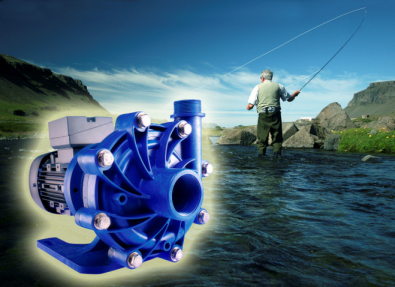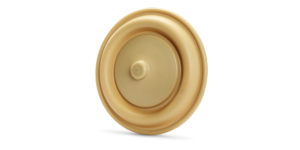Fishing Tackle Manufacturer Hooked on Plastic Pumps
Metal finishing and plating processes are acknowledged as being among the most challenging applications for pumps. This is often as a result of the environment in which the pumps are operating, along with the wide range of aggressive fluids used in many of these surface treatment and finishing processes.

MICHAEL SMITH ENGINEERS
The Finish Thompson range of plastic magnet-drive centrifugal pumps available through MICHAEL SMITH ENGINEERS, have been used successfully in some of the most demanding metal finishing applications.
One interesting example is Wright McGill, manufacturers of the Eagle Claw Fishing Tackle brand, a Colorado based company who use Finish Thompson DB Series pumps. The company produce millions of high quality fishhooks every year in a myriad of styles and colours which requires an incredibly efficient range of precision metal finishing processes. These processes include nickel, electroless nickel (EN), tin, brass, zinc, bronze, and even gold plating. The hooks are manufactured in so many colours because specific colours have been found to be attractive to certain species of fish. In addition to plating, their metal finishing processes also include washing, heat-treating and the application of various paint type coatings.
In 2005, Finish Thompson were completing the design of their latest magnetic drive pump, the DB Series, which featured engineered plastics and other specialised materials to ensure optimum corrosion resistance.
As well as using these materials they benefitted from the latest engineering technology including computational fluid dynamics, finite element analysis and custom magnetic design software.
To complete the development and testing process Finish Thompson needed an appropriately demanding test site and the Eagle Claw manufacturing site was happy to oblige. One of the processes involved concentrated nitric acid, used as a stripping agent to remove built-up plating materials on barrels and other items used in their plating processes. Nitric is an extremely aggressive highly oxidizing acid capable of dissolving most metals and has a severe effect on many other materials. Eventually, the nitric acid became saturated with the various plating products removed during the stripping process and engineers started to look at ways of reducing the use of nitric acid. This led to the installation of the DB Series pump on a trail basis within a filtration system which was designed to recycle the nitric acid.
A DB test pump was manufactured from extremely corrosion resistant materials including precision moulded carbon fibre filled PVDF, PTFE bushing, high purity ceramic and powerful neodymium drive magnets encapsulated in pure PVDF. It was then installed in the nitric acid recycling system, a truly challenging application. Once installed on the filtration system it was used to circulate approximately 680 litres of nitric acid through a series of filters with each filter removing progressively smaller particles. The goal was to re-circulate the tank about three times per hour until the nitric acid was clean enough for reuse. The pump was in regular operation for six months while the effectiveness of the filtration process was evaluated. Due to the excellent performance and reliability of the pump in that test, Wright McGill continues to use Finish Thompson magnetic drive pumps for handling corrosive and hazardous fluids in applications throughout its facility.
As a result of the non-metallic materials used for both the housing and all the key wetted components, DB pumps are ideal for transferring corrosive liquids in chemical manufacturing, metal plating, surface treatment, wastewater treatment, electronics manufacture or wherever hazardous liquids need to be pumped safely.
They are available in a close-coupled design configuration for optimum magnet alignment and provide extended dry-running capability when specified with a carbon bushing and are therefore protected from system upsets.
Other features and benefits include; high operating efficiency resulting in lower energy consumption, improved hydraulic coverage for both 50 and 60 Hz operation. They have evenly spaced impeller trims enabling duty points to be precisely met and a two-piece impeller design which allows the impeller or inner drive magnet to be individually replaced. Also, the DB Series pumps offer high working pressure capability which means fluids with a high specific gravity can be easily pumped without the need for impeller trimming.
The pumps are designed for either horizontal or vertical installation (vertical when equipped with an IEC motor), they have a maximum operating temperature of 180°F (82°C) for the polypropylene model and 220°F (104°C) for the PVDF option.
Source: Michael Smith Engineers


